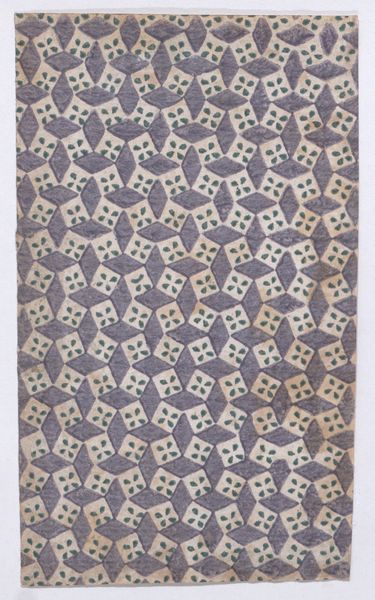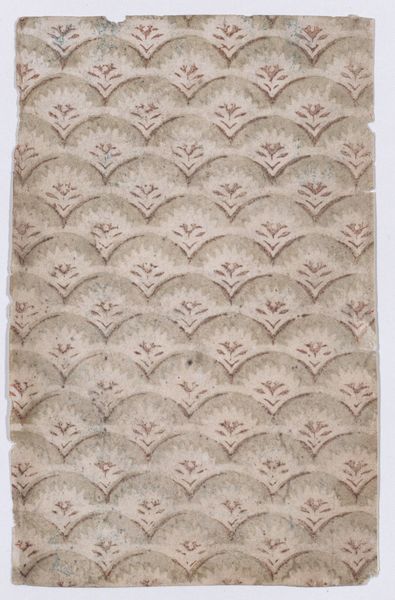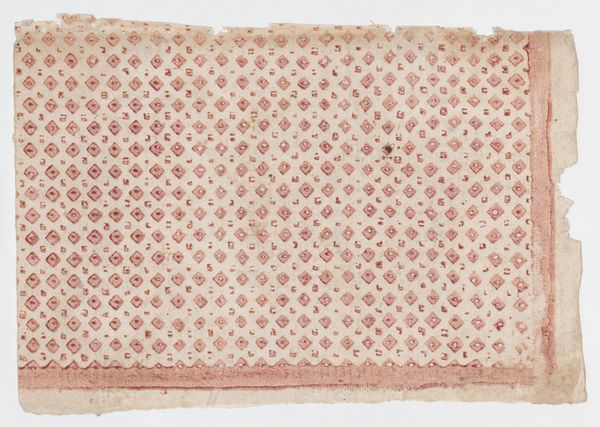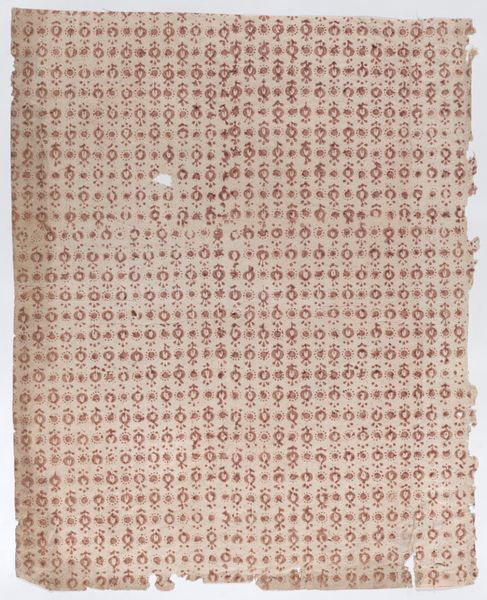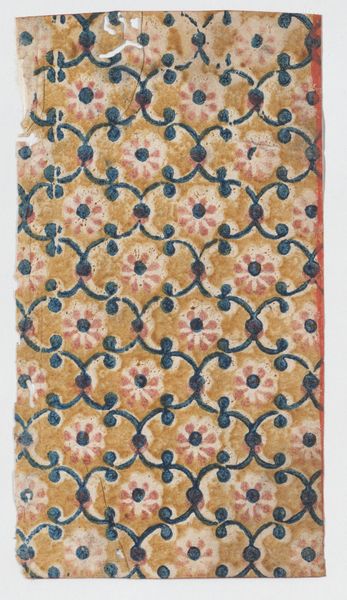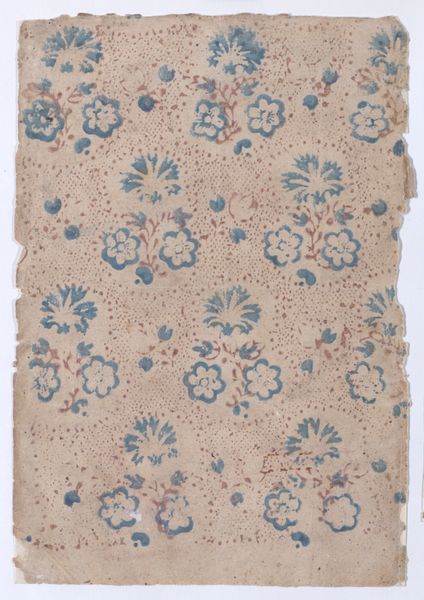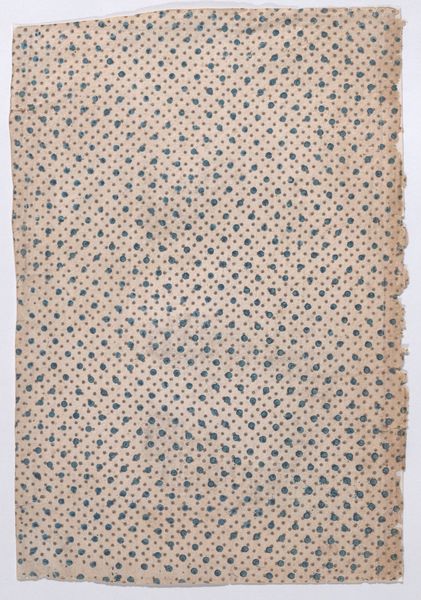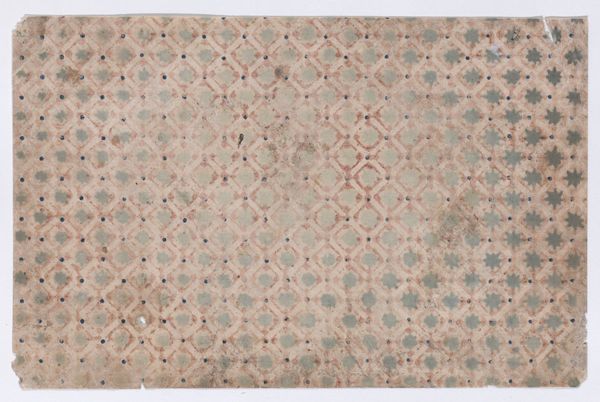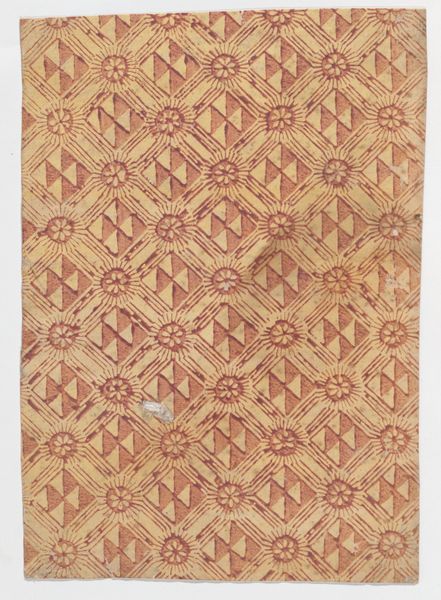
Sheet with overall lattice pattern with dots and flowers 1800 - 1900
0:00
0:00
drawing, print
#
drawing
#
natural stone pattern
#
naturalistic pattern
# print
#
geometric pattern
#
abstract pattern
#
organic pattern
#
wooden texture
#
pattern repetition
#
imprinted textile
#
layered pattern
#
organic texture
Dimensions: Sheet: 6 5/8 × 4 1/8 in. (16.9 × 10.5 cm)
Copyright: Public Domain
Curator: Looking at this, I'm struck by how delicate the piece feels, almost like looking at faded memories. The lattice pattern overlaid with dots and these simple flowers... it’s very gentle. Editor: Well, let's delve into this seemingly humble "Sheet with overall lattice pattern with dots and flowers," an artwork made sometime between 1800 and 1900. It's housed here at the Met, offering a glimpse into the aesthetics of its time through print and drawing techniques, probably destined for a larger application in textiles or wallpaper. Curator: The repetition almost creates a hypnotic effect, but I find myself drawn to the small imperfections, the variations within the grid, like tiny deviations from the established order. And what does the floral motif symbolize for you? Editor: Floral patterns, historically, have served as visual shorthand for notions of nature, domesticity, even morality. In this context, the flowers soften the rigid geometry, perhaps signifying a yearning for the natural world within structured, urban environments. Pattern books like these were vital tools, and say a lot about the society it served. Curator: That’s a keen observation, reflecting how people brought symbols of nature into their everyday lives, finding comfort and beauty in simplified forms. There's a clear attempt to balance structure and organic elements here, isn't it? The eye jumps from the lattice to the gentle roundness of the blooms. Editor: Precisely! The interplay reveals a broader cultural tension: order versus nature, constraint versus freedom. We also can't ignore the material; the aged paper and faded pigments lend an archaeological aura. Its survival highlights an interest of pattern, in itself, worthy of preservation. It points to an early commercial application, reproduced for an anonymous buying public. Curator: I agree. It speaks volumes about taste-making in that era, a dialogue between artisan, industry and audience reflected in something as simple as pattern and print. Editor: Indeed. The beauty, in a way, is amplified through its accessibility; art democratized onto everyday surfaces, integrating symbolism into common experiences. Curator: It makes you think about the power of accessible design to shape cultural values. A very powerful statement piece. Editor: Absolutely, seeing how basic visual building blocks connect with both commercial appeal and societal ethos offers us great historical perspectives.
Comments
No comments
Be the first to comment and join the conversation on the ultimate creative platform.
